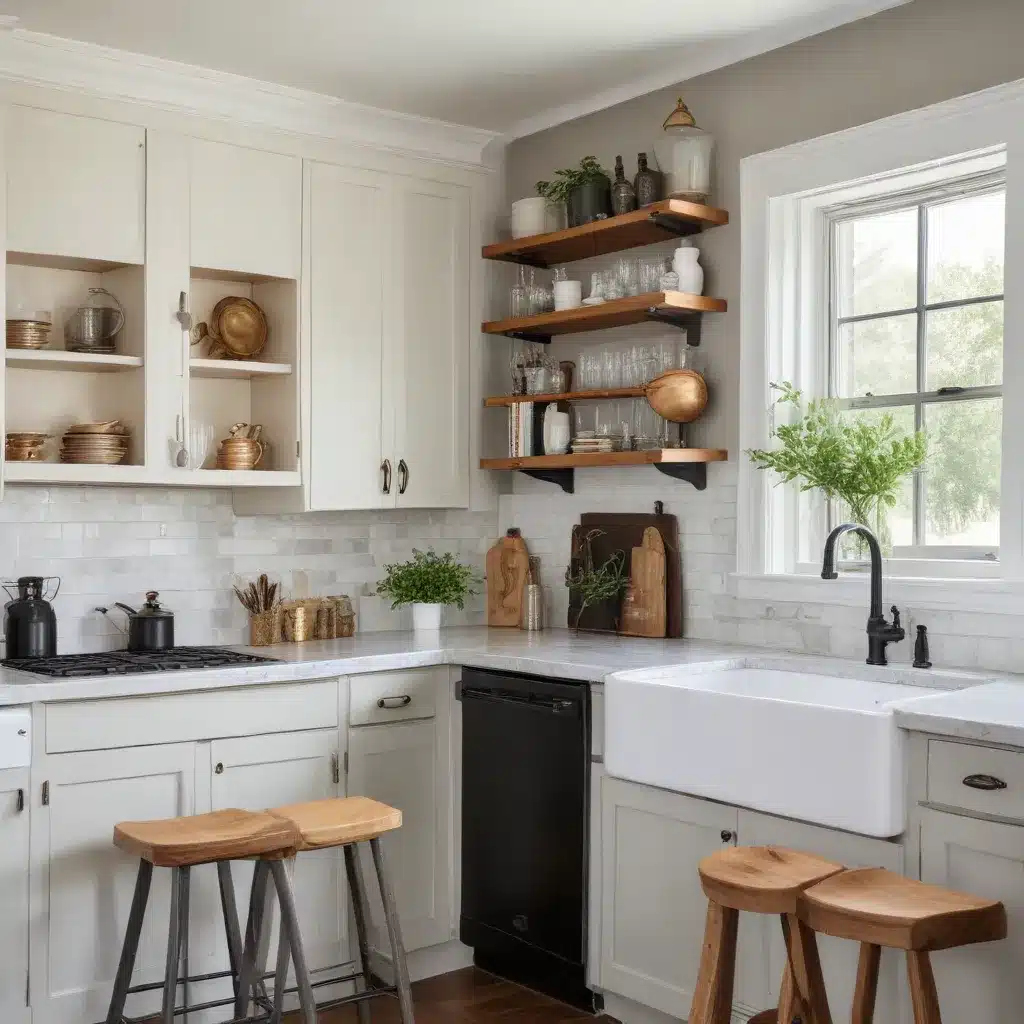
Breathing new life into an old home can be a captivating journey, one that combines the timeless allure of the past with the comforts of contemporary living. As an experienced home improvement consultant for the Reluctant Renovator, I’ve had the privilege of guiding countless homeowners through the challenges and joys of historic home renovations. In this article, we’ll explore how to strike the perfect balance between preserving vintage charm and incorporating modern functionality – a delicate dance that can transform an older house into a true sanctuary.
Architectural Styles and Features
Vintage charm is often defined by the unique architectural elements that were hallmarks of bygone eras. Whether your home embraces the ornate details of Victorian-era design, the warm wood tones and cozy fireplaces of a Craftsman bungalow, or the clean lines and minimalist sensibilities of mid-century modern, these historic features are what give your property its distinctive character.
Maintaining the integrity of these design elements is crucial when undertaking a renovation. Original hardwood floors, intricate moldings, stained-glass windows, and exposed brick walls are just a few examples of the unique details that can imbue a home with a timeless ambiance. By thoughtfully preserving these elements, you can ensure your renovation honors the property’s history while elevating its livability.
Modern Living Needs
Of course, historic homes were not designed with today’s living standards in mind. Outdated electrical systems, inefficient insulation, and cramped floor plans can make it challenging to achieve the functionality and comfort modern homeowners expect. This is where the art of renovation shines, as skilled designers and contractors work to marry the past and present seamlessly.
Integrating technological advancements is a key aspect of updating historic homes. Upgrading dated plumbing, rewiring outdated electrical systems, and installing energy-efficient HVAC can breathe new life into an older property. Smart home features, like automated lighting and climate control, can also modernize a historic space without compromising its character.
Preserving Historic Integrity
One of the primary challenges in renovating a historic home lies in preserving its architectural integrity. Maintaining original features while introducing contemporary elements requires a delicate balance and a deep understanding of the property’s history.
Carefully restoring elements like intricate moldings, vintage hardware, and antique fireplaces can help retain the home’s soul. At the same time, carefully integrating modern amenities, such as updated kitchens and bathrooms, can enhance livability without detracting from the overall aesthetic.
The art of balancing old and new is where the true mastery of historic home renovation shines. Skilled designers and contractors understand how to seamlessly blend timeless details with modern conveniences, creating a cohesive and harmonious living environment.
Incorporating Modern Comforts
While preserving the past is paramount, it’s equally important to ensure a historic home meets the modern expectations of comfort and convenience. Upgrading outdated systems, optimizing energy efficiency, and incorporating smart home features can transform an older property into a true sanctuary.
Investing in energy-efficient upgrades, such as high-performance windows, upgraded insulation, and energy-efficient appliances, can not only improve comfort but also reduce utility costs and your home’s carbon footprint. Integrating smart home technology, like programmable thermostats and voice-controlled lighting, can further enhance the living experience while respecting the historic character of the space.
Blending Old and New
The true art of historic home renovation lies in the seamless integration of vintage charm and modern functionality. This delicate balance requires a keen eye for design, a deep understanding of architectural history, and a meticulous attention to detail.
Skilled designers will carefully consider how to transition between original features and contemporary elements, ensuring a cohesive and harmonious flow throughout the home. This might involve echoing historical motifs in new millwork, selecting finishes that complement the existing palette, or strategically placing modern fixtures to highlight original architectural details.
By embracing the complementary aesthetics of old and new, you can create a living space that celebrates the past while catering to the needs of the present. The result is a truly unique and captivating home that offers the best of both worlds.
Project Execution
Undertaking a historic home renovation requires meticulous planning, specialized expertise, and a commitment to preserving the property’s architectural integrity. The process often begins with historical research, delving into the home’s origins and understanding its significance within the community.
Navigating the complexities of permits and regulations is also a crucial step, as historic properties may be subject to specific zoning laws or preservation guidelines. Collaborating with architects, designers, and contractors who have experience in historic restoration can ensure your renovation project adheres to the necessary guidelines while achieving your desired outcome.
The craftsmanship involved in a historic home renovation is truly an art form. From the skilled restoration of original features to the careful integration of modern elements, every aspect of the project must be executed with the utmost care and attention to detail. The end result is a living space that not only honors the past but also embraces the comforts and conveniences of contemporary living.
As an experienced home improvement consultant, I’ve had the privilege of witnessing the incredible transformations that can occur when vintage charm meets modern functionality. Whether you’re restoring a beloved family heirloom or investing in a historic property, the journey of renovating an older home is one that promises to be both challenging and deeply rewarding. By striking the perfect balance between preserving the past and embracing the present, you can create a truly unique and captivating living environment that will stand the test of time.
If you’re embarking on a historic home renovation project, I encourage you to explore the wealth of resources available on the Reluctant Renovator website. From budget-friendly projects and eco-friendly solutions to expert tips and tricks, we’re here to guide you every step of the way. Let’s work together to breathe new life into your vintage gem and create a home that celebrates the best of both the past and the present.



